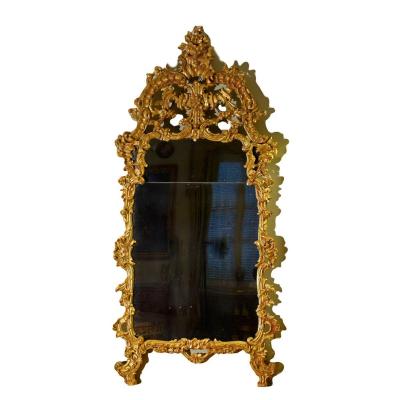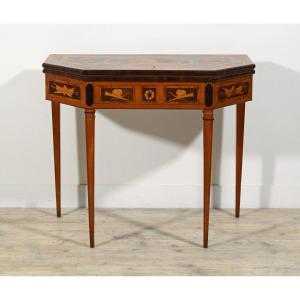Oil on canvas; Dimensions: canvas cm H 73.5 x W 97. Frame: cm W 118.5 x H 94.5 x D 5
Previously in Rome, Galleria Lampronti
This fine pair of paintings, created in oil on canvas and presented in carved and gilded wooden frames in style, depict architectural caprices enlivened by figures and scenes with a classical taste. The works, attributed to Alberto Carlieri, are published in Giancarlo Sestieri's book Il Capriccio Architettonico.
The canvases are titled as follows:
Bacchanal with Bacchus on an Ass, Dancing Young Women and Musicians, Amorini with Flowers.
Courtyard of a Ionic Palace with Upper Cornice in Ruins, Statues, and Vases. On the right, a large amphora-shaped vase sculpted in bas-relief.
Sacrifice Scene in the Atrium of a Composite Palace. Front Arch and Niches with Female Allegorical Statues Between the Arches.
The works, painted with great finesse, even in the details and small figures, clearly express the artistic style of the famous Roman painter Alberto Carlieri (Rome, 1672 - 1720), the most appreciated and sought-after artist in Rome between the death of Giovanni Ghisolfi (Milan 1623-1683) and the rise of Giovanni Paolo Panini (Piacenza 1691 – Rome 1765).
Carlieri was born in Rome in 1672 and began studying architectural painting under the guidance of Giuseppe de Marchis. He later became a student and collaborator of Andrea Pozzo. Present in the most illustrious Roman collections, including those of Filippo II Colonna, the Rospigliosi family, and Cardinal Valenti Gonzaga, Carlieri developed well-recognized compositional models influenced not only by his master’s work but also by those of Viviano and Nicolò Codazzi. His artistic career can be traced through signed works, around which a fairly extensive catalogue of canvases has been built. Information about Carlieri and his signed or dated works spans between 1690 and around 1720. Nothing specific is known about the painter's life, but he is believed to have died in Rome shortly after 1720.
The works are in excellent condition and feature modern relining.
High-resolution images are available upon request.
Bibliography: Il Capriccio Architettonico in Italia nel XVII e XVIII secolo, by Giancarlo Sestieri, EtGraphiae, 2015, p. 198


















































 Le Magazine de PROANTIC
Le Magazine de PROANTIC TRÉSORS Magazine
TRÉSORS Magazine Rivista Artiquariato
Rivista Artiquariato